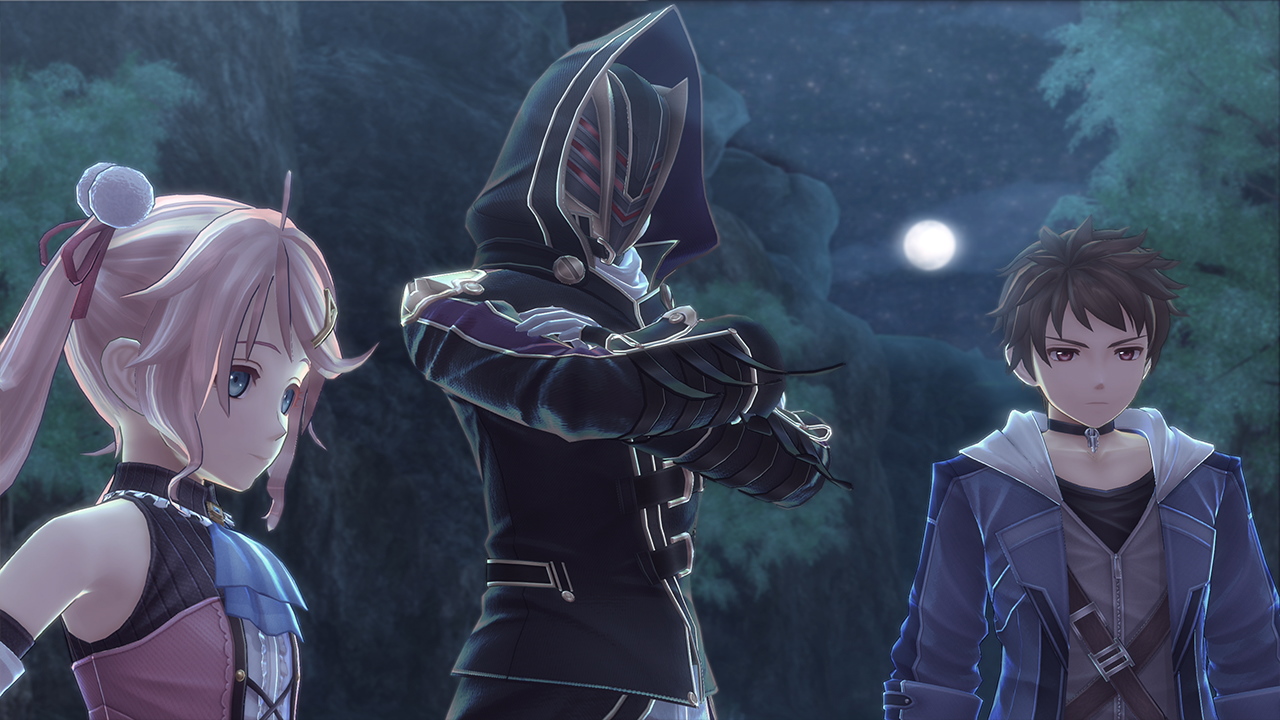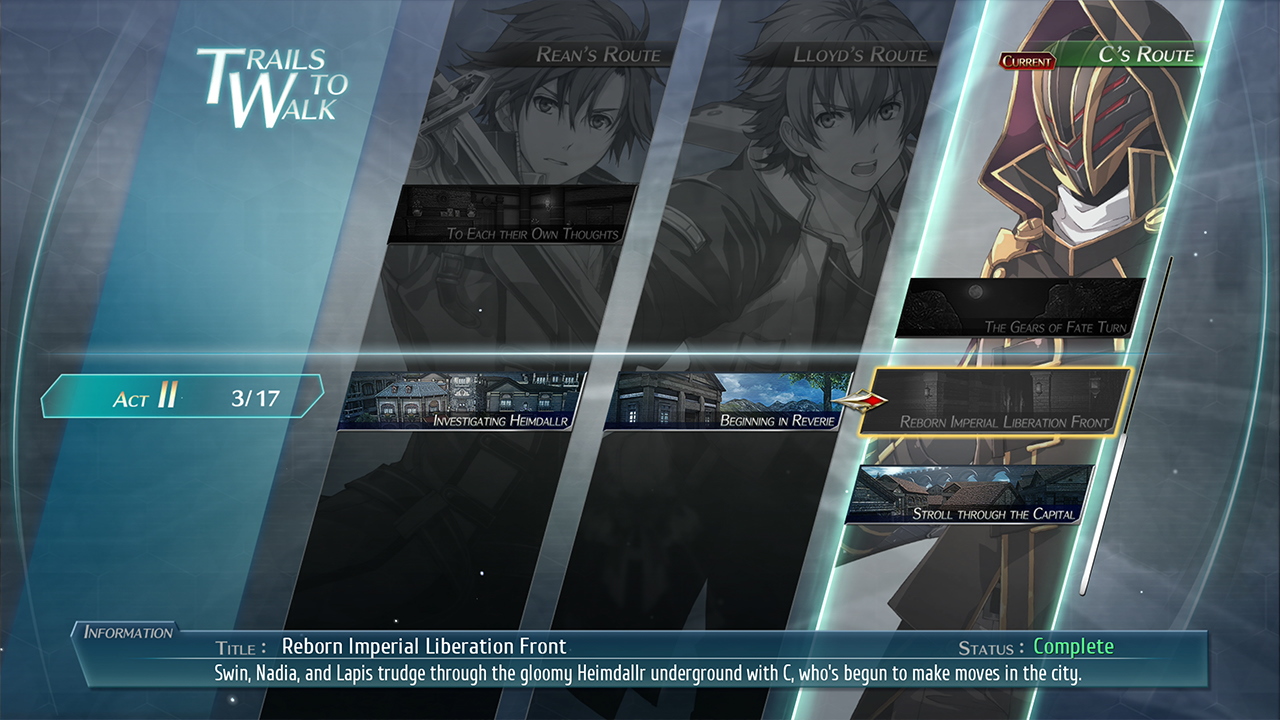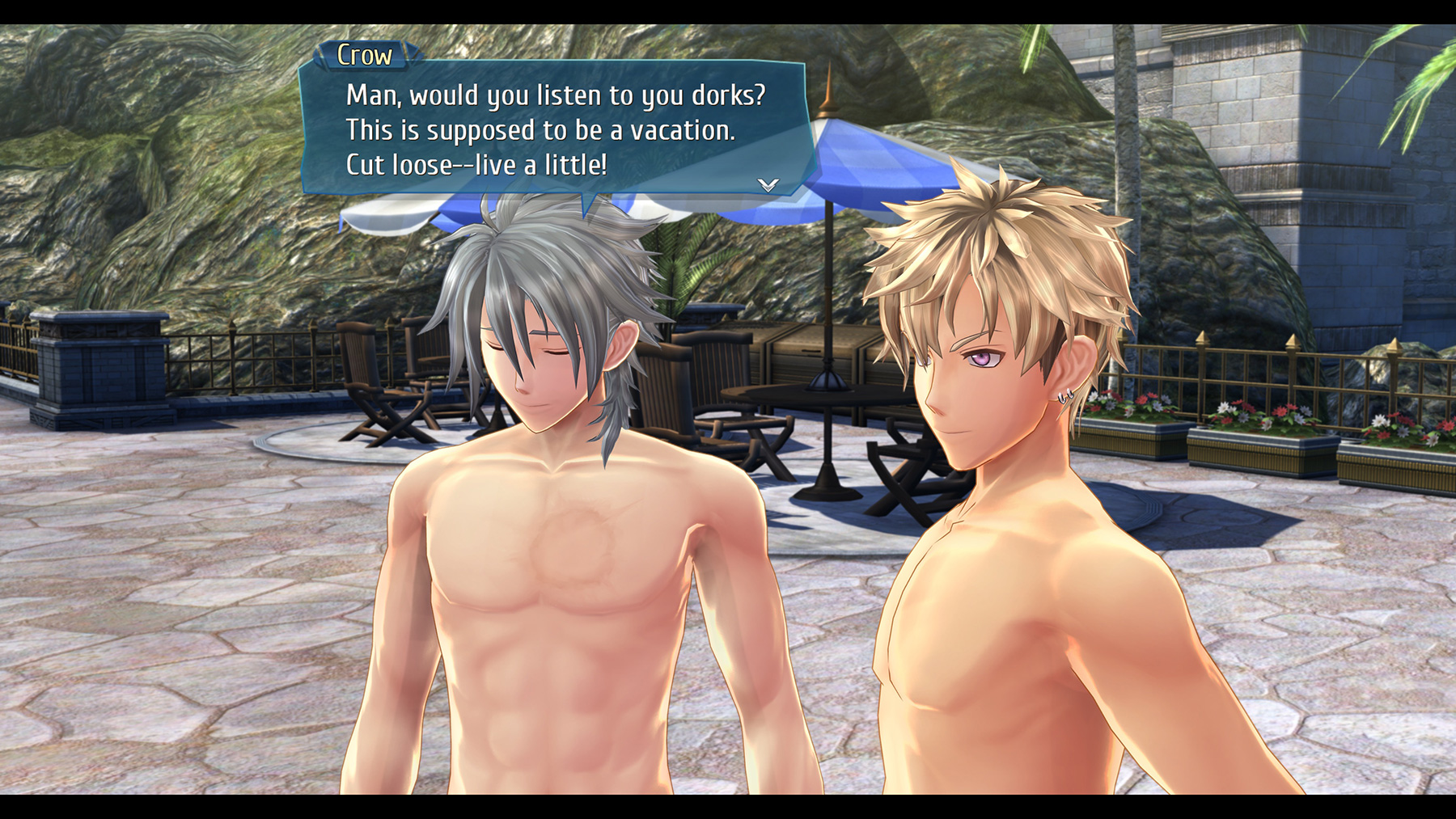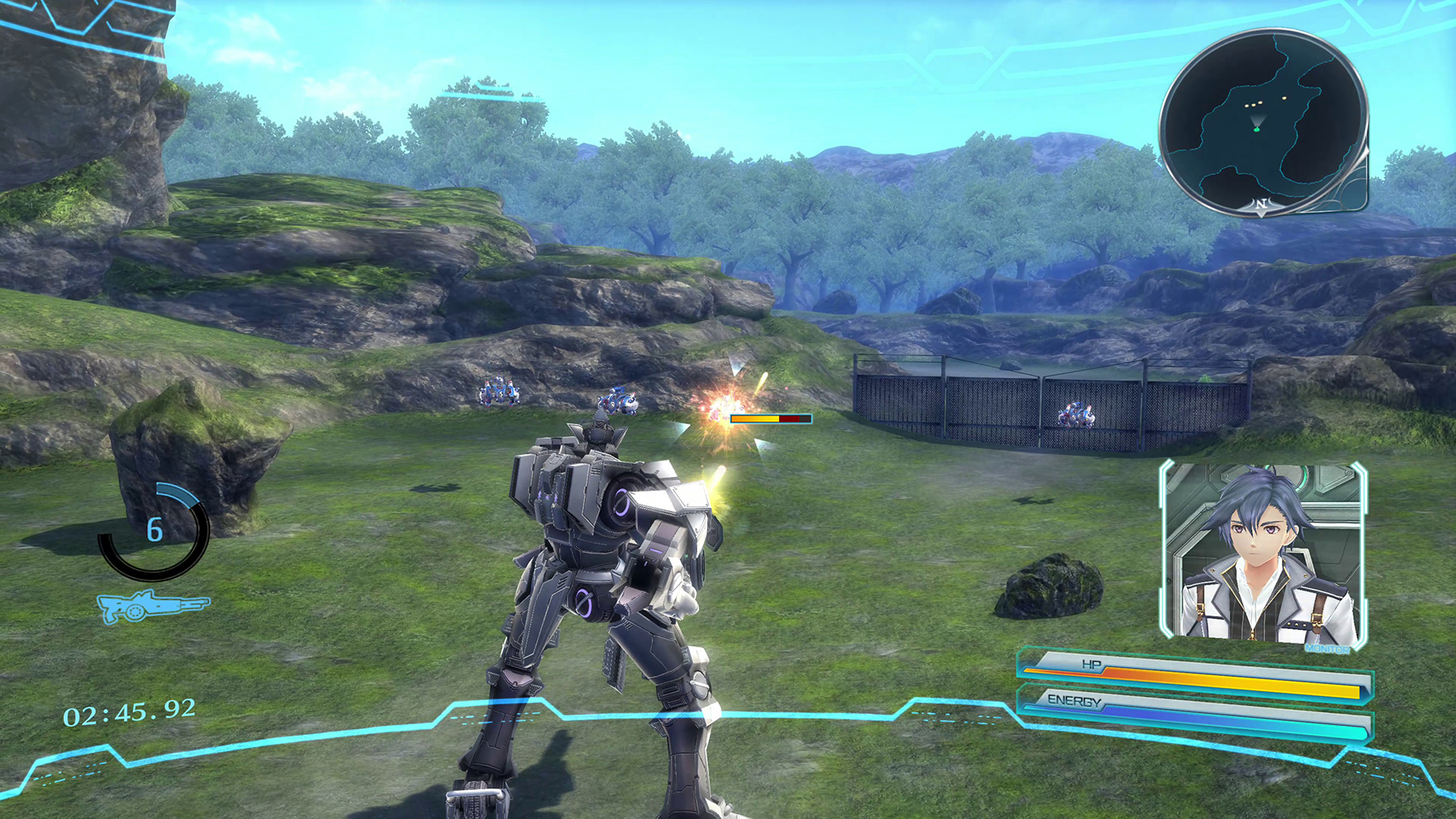Review: The Legend of Heroes: Trails Into Reverie (Nintendo Switch)

The Legend of Heroes: Trails Into Reverie is perhaps the longest denouement in the history of gaming, but I would expect (and, honestly, want) nothing less from this franchise. This entry in the long-running series attempts to tie up two somewhat separate story arcs you thought were already tied up. Whether it all works depends upon what you want from a JRPG.
I’ll explain this as clearly as I can. The game follows three separate storylines. One centers around Lloyd Bannings of the SSS, the new police division from the Trails From Zero and Trails to Azure games, both of which were recently released on the Switch. Another focuses on Rean Schwarzer, instructor of Class VII, harem king, and hero of the Trails of Cold Steel series. Games III and IV from that story arc hit the Switch, but not I and II.
Finally, there’s a new group featuring the mysterious, masked C, and a “doll” of obvious importance.
All of these groups have a multitude of characters from previous games who come and go at different intervals. If you have no previous experience with The Legend of Heroes, you definitely do not want to start here; keeping track of everyone in the three storylines is difficult enough when they’re already familiar. You may be fine if you’ve only played the Trails of Cold Steel games, but if you’re starting fresh, take on Zero and Azure first, move on to Cold Steel III and IV, and only then dig into Reverie.
All that aside, what’s going on? Well, without giving away important elements of the previous games, I’ll just say the City of Crossbell is about to declare its independence when a character believed to be imprisoned stages a coup and seizes control of the town. Ends up some people just aren’t happy with how the war wrapped up at the end of Trails of Cold Steel IV, so the long-awaited happy ending will have to wait a little longer. Our various groups are splintered, so much of the early game centers around regrouping to figure out exactly who’s behind this rebellion and how they can thwart it.
Anyone who’s played a single Legend of Heroes game knows to expect plenty of political intrigue and ambiguity as to exactly who’s on which side. That certainly carries over here, especially as characters from the different series flow in and out of the three groups. I’m glad they’re better than I am at recognizing one another, but I’m even worse at that in real life where I don’t have the assistance of brightly colored anime hair.
Players can mostly bounce between the three stories at will, although there are points where you can’t push forward in one without reaching a certain point in the others
There are times when the three stories intersect, and you can expect multiple battles between our heroes as they slowly figure things out. My first complaint stems from that, as there’s an early segment when two groups fight multiple times in quick succession. You’ll switch perspectives and locations, but it still felt like I was doing the exact same thing for a couple of hours. That portion of the story did not need to be so drawn out.
And while I’m talking about the story, my long-standing complaint about The Legend of Heroes still stands; although I enjoy the deep lore, I wish the developers didn’t dump so much narrative on us at once, especially between boss battles where you can’t save the game. There are still segments that require you to play upwards of an hour without saving, so don’t start a big fight before bedtime comes or the bus arrives.
Those boss fights, as all the fights, use the same turn-based mechanics as the previous games. For those not familiar with the series, you basically have immediate physical attacks, arts that can target weaknesses but usually come with a delay, or special skills that can cause more damage and inflict status effects. Arts use EP that slowly disappears until you rest or replenish with potions, while skills use CP that quickly drains and is restored mostly through regular combat. Breaking an enemy allows you to cause more damage and prevent them from unleashing their powerful attacks on you. And, of course, you’ll need to spend plenty of time healing and buffing your group as you cycle through the available party members (often of your choosing) during the bigger fights.
You can still power up your abilities with quartz and orbs that can be enhanced and interchanged, and you’ll be able to swap out and upgrade your weapons, armor, and accessories. The battle system is very deep, and optimizing your party for the individual battles is a big part of the fun. If you disagree, playing on easy mode allows you to push through without requiring much fiddling around in the party menu.
Of course, new Legend of Heroes games don’t arrive without new elements, and this time we get the United Front. When this gauge is full, the full party (four active plus one support) can launch an enhanced physical or arts attack that comes with additional benefits. There’s also a party-healing option if you need it. United Front isn’t available at all times, but it can be a godsend during tough battles (or when you just want to quickly clear through a group of lesser enemies).
The biggest change, however, is not battle-related. Trails Into Reverie forgoes the typical town/field/dungeon flow by adding a new True Reverie Corridor. When accessible, all three groups come together to engage in a multitude of tasks completely separate from the story. Here, for example, is where series fans will be playing Vantage Masters and Pom! Pom! Party! You can purchase rare items you may have missed earlier in the main game. There are randomly generated dungeons to enter and unique battles to initiate to improve your skills and acquire rare items. There are completely unrelated mini-games to play, including a franchise trivia competition and an on-rails shooter.
This is also where most of the fanservice has gone, thanks to a beach segment that allows everyone to lounge about in their swimwear.
The men get to show off their toned abs while splitting watermelons, and Rean returns to his harem while sharing drinks and flirtatious conversations with the women. If you had issues with that kind of content in previous games, it’s easily skipped here. Personally, I had a bigger issue with Vantage Masters. I know it’s a popular trend, but I’d really rather developers not wedge extra video games into my video games.
That complaint encompasses the True Reverie Corridor as a whole. Trails Into Reverie forces you in this area at multiple points, absolutely killing the momentum of the story. And considering the narrative is so important to the game, it’s weird to yank us away from it for mostly superfluous mini-games and disconnected “memories.” Players don’t need to spend a lot of time in the True Reverie Corridor, but considering the obtainable items and level progression are so important, you’d be crazy not to.
Also, there’s one particular area in chapter three where the game crashed on me every time after catching a fish. I imagine that’s a bug that will be addressed via an update (if not already), but to be safe, be sure you save your game before fishing!
The result is a more disjointed experience than the previous Legend of Heroes games. The combat is still great, the characters are vivid and fun, and the story pushes along at a decent clip (when it’s not bogged down by prolonged battle segments). It also looks great and plays wonderfully on the Switch.
It’s a thrilling world to dig into, and Trails Into Reverie serves as a great thank-you gift for those who did so with the whole The Legend of Heroes series. If you accept it as such, you’ll be entertained.
But if you’re expecting a game that’s as gripping as the previous Switch-compatible entries, you’ll be happier taking a different trail.








